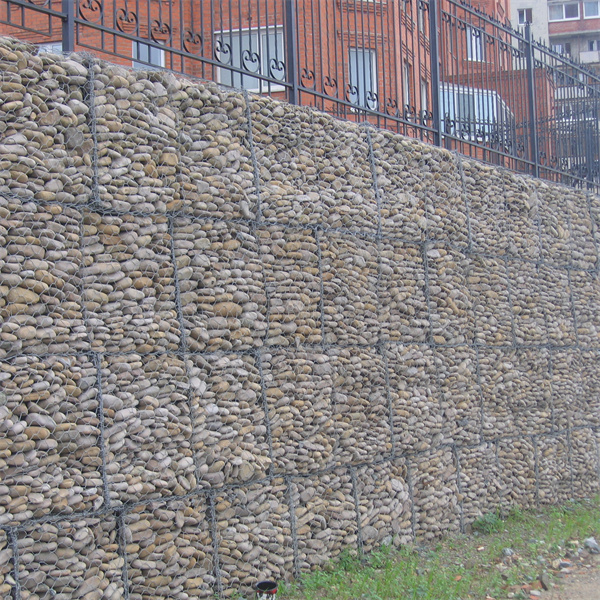ನವೆಂ . 25, 2024 00:47 Back to list
Gabion Baskets for Landscaping by Top Manufacturers and Innovative Designs
The Rise of Gabion Baskets in Landscaping A Manufacturer's Perspective
In recent years, gabion baskets have gained significant popularity in landscaping design and construction. These versatile structures, traditionally used for erosion control and stabilization, have found their way into residential gardens, public parks, and commercial properties. The integration of gabion baskets into landscaping projects not only enhances aesthetic appeal but also offers functional benefits. As a manufacturer, it's essential to understand the growing demand and the unique features of gabion baskets that make them a preferred choice in the landscaping industry.
What are Gabion Baskets?
Gabion baskets are wire mesh containers filled with rocks, stones, or other materials. They are typically rectangular in shape and can be stacked or placed in various configurations to create retaining walls, seating areas, or decorative features. The word gabion comes from the Italian word gabbione, meaning large cage, which is an apt description of these structures. They have historical roots dating back to ancient times when they were used for fortifications, but their modern applications in landscaping are continuing to evolve.
Benefits of Gabion Baskets in Landscaping
1. Aesthetic Appeal One of the primary reasons for the popularity of gabion baskets is their unique visual appeal. They can blend seamlessly into natural landscapes or stand out as modern architectural features. By using a variety of stones or materials, designers can create customized looks that enhance the overall design of a space.
2. Environmental Benefits Gabion baskets are an eco-friendly option as they can be filled with locally sourced stone or recycled materials. This reduces transportation costs and environmental impact. Furthermore, they allow for excellent drainage, which is crucial in preventing soil erosion and maintaining healthy vegetation.
3. Structural Integrity Gabion baskets provide robust structural support, making them ideal for retaining walls and slopes. Their weight and structure help prevent soil movement, ensuring stability in areas with changes in elevation. This makes them not only a functional choice but also a long-lasting one.
4. Cost-Effectiveness Compared to traditional landscaping materials such as concrete or bricks, gabion baskets are often more affordable. Their installation can also be less labor-intensive, reducing overall project costs. Additionally, the durability of gabion structures means fewer repairs and replacements over time.
gabion baskets landscaping manufacturers

5. Flexibility and Versatility Gabion baskets can be used in a wide range of applications—from garden borders and pathways to larger-scale projects like riverbank stabilization and retaining walls. Their modular nature allows for creative designs and the ability to adapt to various landscaping needs.
The Manufacturer's Role
As a manufacturer of gabion baskets, understanding the needs of landscape architects and contractors is crucial. Providing high-quality products that meet industry standards is essential for building a positive reputation. Here are several strategies manufacturers can adopt to thrive in this growing market
- Product Variety Diversifying the range of gabion baskets offered can cater to different design preferences and project requirements. This includes offering various sizes, shapes, and mesh styles to meet diverse customer needs.
- Sustainable Practices As the trend toward sustainable landscaping continues to rise, manufacturers can attract environmentally conscious buyers by sourcing materials responsibly and promoting eco-friendly manufacturing processes.
- Educating Clients Providing educational resources, such as installation guides, design ideas, and maintenance tips, can empower landscapers and homeowners to choose gabion baskets confidently. Hosting workshops or webinars can also help build relationships within the landscaping community.
- Custom Solutions Understanding that each project is unique, offering customized solutions can set a manufacturer apart from competitors. This may include tailoring gabion sizes, mesh types, or even the materials used in the infill.
Conclusion
Gabion baskets have firmly established themselves as a favored option in landscaping, balancing functionality and aesthetic appeal. As their popularity grows, manufacturers must adapt and innovate to meet the needs of designers and clients alike. By focusing on quality, sustainability, and customer education, manufacturers can position themselves successfully in this thriving industry, contributing to beautiful and resilient landscapes for years to come.
-
hesco-gabion-baskets-for-coastal-erosion-prevention
NewsAug.22,2025
-
longevity-and-durability-of-river-rock-gabion-walls
NewsAug.22,2025
-
how-to-integrate-gabion-3d-walls-in-urban-planning
NewsAug.22,2025
-
reno-mattress-gabion-applications-in-civil-engineering
NewsAug.22,2025
-
how-to-install-wire-mesh-for-gabion-baskets-properly
NewsAug.22,2025
-
best-materials-for-filling-a-chain-link-gabion
NewsAug.22,2025
-
Wire Mesh Thickness Impact on Gabion Wall Load Bearing
NewsAug.12,2025






